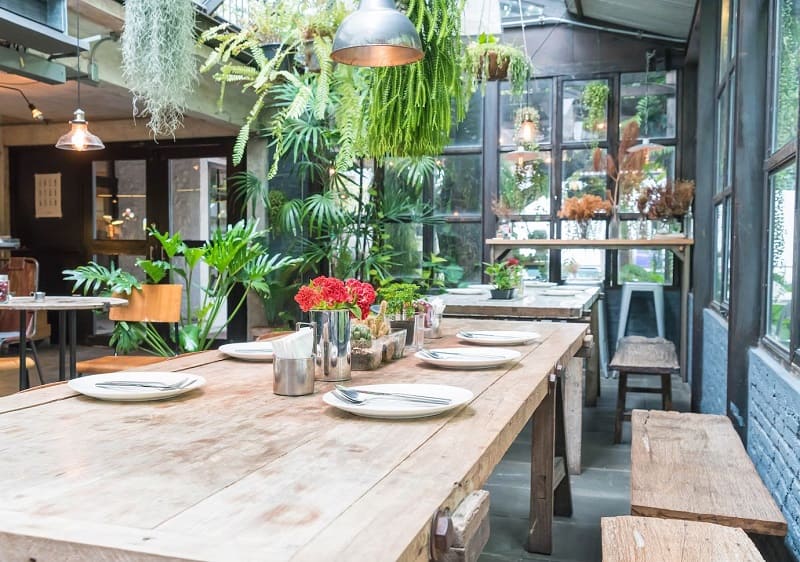Restaurants and sustainability can blend perfectly. A sustainable restaurant is a commitment to business practices that prioritize environmental and social well-being. Such sustainable or eco-friendly restaurants make intentional choices to reduce waste, save energy, and contribute to local communities. These choices range from sourcing food locally to using eco-friendly packaging, all designed to lessen a restaurant’s impact on the Earth. By adopting sustainable practices, these restaurants not only do their part for the planet but also attract a growing customer base that values these efforts.
Let’s have a look at how these restaurants become sustainable.
Tips on Making Your Restaurants More Sustainable or Eco-friendly:
Turning a restaurant sustainable isn’t an overnight task. However, it’s certainly doable. You don’t have to reinvent the wheel; sometimes, a few adjustments can produce meaningful changes.
1. Minimize Food Waste
Food waste is a common issue that is difficult to ignore for many restaurants. By being mindful of food waste, restaurants can save a significant amount of money and resources. They can employ inventory tracking software for keeping tabs on food supplies. Menu planning to utilize ingredients in multiple dishes and staff training to reduce prep waste are other methods. Even the practice of donating unspoiled, excess food to local shelters can make a big difference.
2. Use Eco-Friendly Food Packaging Materials
Traditional plastic containers are harmful to the environment and contribute to the growing problem of waste. Restaurants can switch to biodegradable or compostable packaging. This way, restaurants can reduce their ecological footprint. They can also offer reusable containers for a deposit, which customers can return for a refund or reuse on their next visit.

3. Remember to Recycle and Reuse
Recycling and reusing materials can make restaurants more sustainable in a few key ways. First, recycling cuts down on landfill waste, lowering the environmental footprint. Second, reusing items like glass jars or metal trays minimizes the need for new products, reducing resource consumption. Lastly, these practices can also save money in the long run, as buying disposable items repeatedly adds up. Plus, customers often value and support eco-friendly businesses.
4. Use Sustainable Furniture and Consumables
When it comes to furniture, go beyond aesthetics. Restaurant Tables and chairs crafted from reclaimed wood or recycled metal are excellent options. Napkins, spoons and straws made from recycled or sustainable materials can also contribute to a restaurant’s overall eco-friendly mission.

5. Use Energy-Efficient Restaurant Equipment
Energy-efficient appliances can offer both immediate and long-term savings. For example, using ENERGY STAR-rated kitchen appliances and HVAC systems can significantly reduce utility bills. Even shifting from traditional bulbs to LED lights can contribute to energy savings.
6. Buy Local Products
Using local products helps restaurants become sustainable in several ways. First, it cuts down on fuel used for transportation, reducing the restaurant’s carbon footprint. Second, it supports local farmers, strengthening the community’s economy. Third, local produce is often fresher and free from extensive preservatives, making the food healthier. Fresh produce also enhances the taste, attracting customers who appreciate quality. Finally, a focus on local products aligns with eco-friendly values, drawing in a crowd that values sustainability. This creates a cycle where the restaurant not only operates sustainably but also appeals to a customer base that supports these efforts.
7. Reduce Water Usage
Cutting down water waste helps restaurants go green in multiple ways. First, it lowers utility bills, making operations cost-effective. Second, less water use reduces the strain on local water supplies. This shows community responsibility. Lastly, eco-friendly practices attract more customers who value sustainability. It’s a win-win for both the environment and business. Installing low-flow faucets in the kitchen and restrooms is a simple way to conserve water. If your restaurant has green spaces, employ smart irrigation systems that use water only when necessary.

8. Choose Eco-Friendly Cleaning Products
Switching to eco-friendly cleaning products is a smart move for restaurants aiming for sustainability. First, these products are less harmful to the environment, as they break down easily. That means fewer chemicals end up in our waterways. Second, they’re generally safer for staff, reducing skin and respiratory issues. This could lead to a happier, healthier work environment. Lastly, customers appreciate eco-conscious choices, which can boost a restaurant’s image and possibly attract a new customer base. Overall, it’s a positive step toward a greener, more responsible business.
Final thoughts,
Restaurant sustainability genuinely makes a difference. It’s not about just conserving resources but also building a brand that people trust and want to support. As consumers become increasingly eco-conscious, restaurants that embrace sustainability stand to gain a loyal following.
FAQs
Sustainability offers three main benefits for restaurants. The first benefit is cost savings through efficient resource use. The second benefit is increased customer appeal as people increasingly opt for eco-friendly businesses. Lastly, it reduces the environmental impact that benefits everyone.
An eco-friendly menu is designed with sustainability in mind. It features locally sourced ingredients that don’t have to travel far. This way carbon emissions get reduced. It also highlights organic and seasonal foods. These food items are better for the environment and often healthier. Importantly, it avoids items that have a high environmental toll. These items can be certain types of meat and out-of-season produce flown in from far away.

